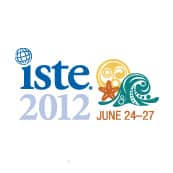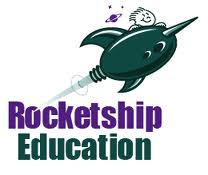Posts by Guest Author
What the PGA Can Teach Us About Value-Added Modeling
Value-added modeling, or VAM, is an analogous method of attempting to gauge teacher effectiveness. Technically, SGP is most similar to a variation of VAM known as Student Growth Percentiles (we’ll distinguish the two as SGPGolf and SGPEd). Like SGPGolf and unlike more traditional VAMs, SGPEd does not attempt to explicitly account for the myriad drivers of results such as peer effects, poverty, gang involvement, or home life.
10 Apps That Combine Learning With Fun
From traditional games, such as Scrabble, which can be used as a vocabulary-building incentive, to Foldit, a game designed by scientists to use crowdsourcing to better understand proteins, to apps that help identify plants and wildlife that are useful on hikes and field trips, here are 10 apps that combine learning with fun, and give you one less reason to have to take that phone away when it's time to learn.
Virtual Classrooms Supersize Hunger to Learn
With more organizations looking for more innovative approaches than traditional teaching methods, blended learning is becoming increasingly popular. With the ‘perfect blend,’ companies can combine self-based learning, assignment tasks and classes, which can be attended virtually or over the phone. These learning tools can then be customized to suit staff learning needs and level of skill.
3 Market Observations of Virtual Classrooms Today
You’ve heard about them—your friend, your friend’s mom, your friend’s cousin’s neighbour—people who you’ve heard graduated from online courses. There were some who used to laugh at the idea of online courses before, given the concept’s relative new-ness as well as the unproven quality of the academic institutions behind them. Does the same still hold true today? How have virtual classrooms improved?
How to Leverage Tech to Keep Students Focused
Technology has the potential to dramatically change the role of teachers, especially when it comes to secondary and higher education. Students no longer need instructors to pass along facts when they have access to the internet and other data gathering sources that they can use to learn the essentials. Teachers, then, must transition to take on more of a “guiding” role in students’ education—they should suggest materials and assign exercises to help students think deeply about and synthesize information.
What Your MBA Teaches You (& Doesn’t Teach You) About Entrepreneurship
You want to learn how to start a business, but where do you start? Unfortunately, starting a company doesn’t come with a handy guidebook or a simple “follow these 10 steps” blog post. The typical path has been to go to school and get an MBA. But an MBA may not be for everyone – especially those looking to start a business.
3 Trends You May Have Missed At ISTE
I tend to eschew the advice of seasoned, world-weary attendees to the International Society for Technology in Education (ISTE) conference each year. “Ignore the exhibit hall,” they implore. “All the real action is in the sessions. The exhibits are just products.”
Ed-Tech Innovators: Get Results Now by Leveraging Great Teachers
We're excited about the prospects, but we all know it will take time for digital learning to transform education. Meanwhile, the effectiveness of teachers will continue to be the single most important school factor in student learning.
A Brief Guide to Tech Training for Faculty
Educators deal with a reality that most tech users do not: responsibility to their students. And, students can be a tricky sort, at least according to reports claiming that some want more tech use in the classroom, while others say that they prefer traditional books and lectures.
An Inside View of Blended Integration at Rocketship Education
At Rocketship Education our mission is to close the achievement gap within our lifetimes. The three pillars of our model are: parent and community engagement, rich professional development for our teachers and school leaders, and individualized learning for our students. Toward the end of individualized learning, we utilize a blended learning model in our K-5 elementary schools. Students use technology and small group tutoring in our Learning Lab for individualized basic skills practice, allowing our teachers to focus on higher-order thinking skills in the classroom.




